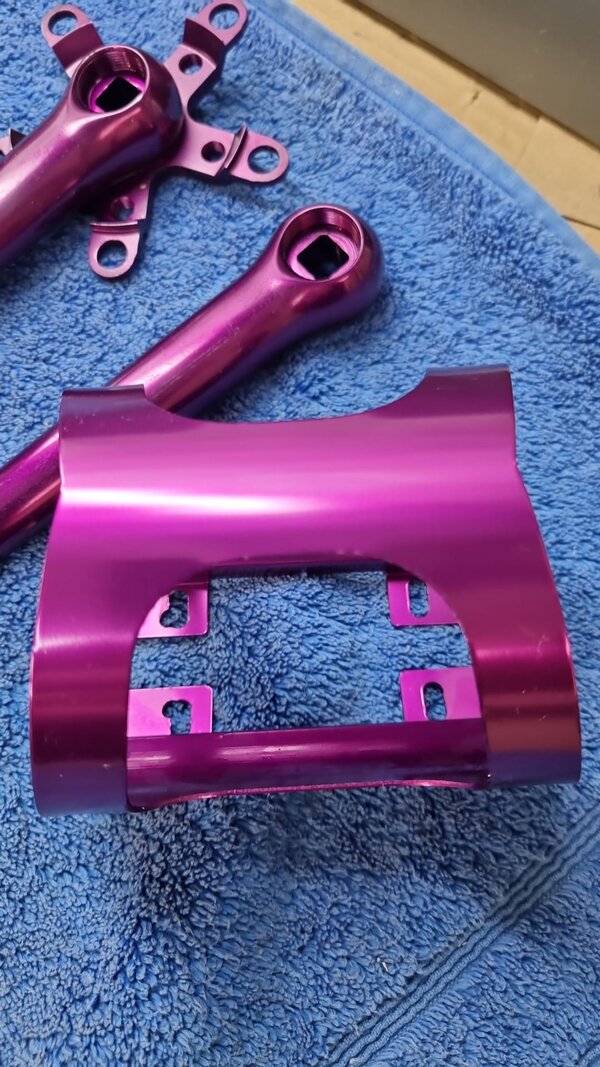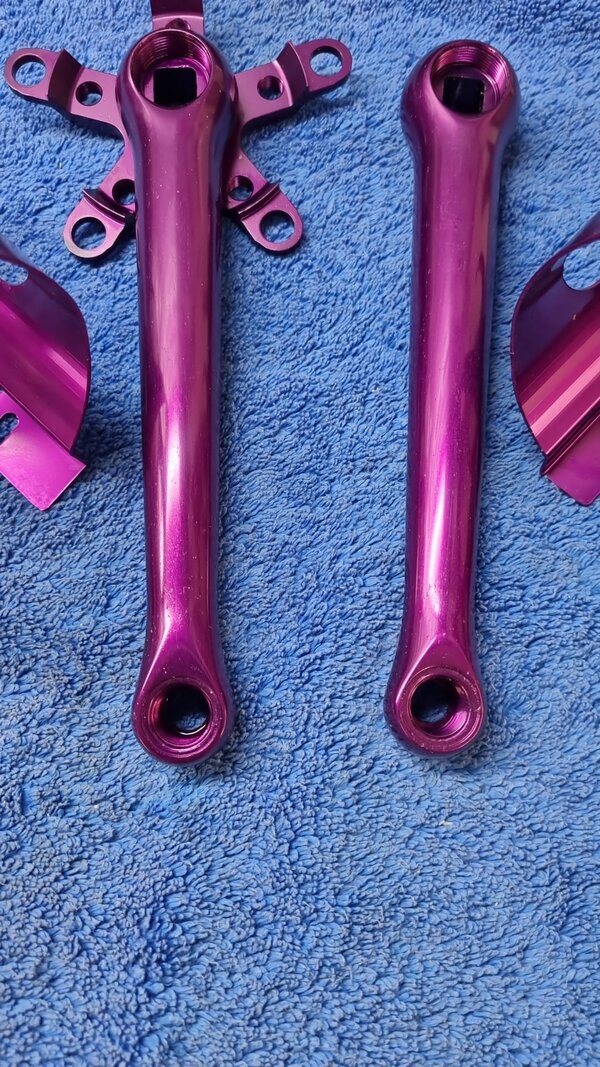You are using an out of date browser. It may not display this or other websites correctly.
You should upgrade or use an alternative browser.
You should upgrade or use an alternative browser.
Anodising
- Thread starter Lewadaada
- Start date
27motorhead
Old School Grand Master
- Feedback
- View
Good to hear of another anodising source with positive results.  They look great!
They look great!  As long as you like purple/3DV components that is... as we all know the colour can be quite polarising!
As long as you like purple/3DV components that is... as we all know the colour can be quite polarising! 
Suprachrgd82
GT Fan
Anodizing and dying are 2 different processes. Anodizing creates a hard anodic oxide layer. Depending on the workpiece finish it can be glossy or opaque, depending on how the aluminum is prepared (glass bead blasted, polished, machined, etc). Anodizing does not place color.
The color comes from a subsequent dying process. Note that different colors fair better or worse with sunlight/UV exposure and heat.
No point to this post really, just yammering. Nice cranks though. Those are sexy.
The color comes from a subsequent dying process. Note that different colors fair better or worse with sunlight/UV exposure and heat.
No point to this post really, just yammering. Nice cranks though. Those are sexy.
Anodising a bike frame can be difficult, even if it is new.
Knowing what grade of alloy, plus the grade of weld wire used is important.
The frame has to be clean etc.
This gives an idea of some of the issues with anodising :
https://www.saf.com/faqs/what-aluminum-alloys-are-recommended-for-anodizing/https://www.saf.com/training-guides/preparing-aluminum-for-finishing/
Die-castings are difficult to anodize because of the porous nature of the surface, even if the alloy is anodizing quality.
Because anodizing is only as good as the metal you use, it will not hide scratches or water stains.
Assemblies must have drainage holes to prevent solution entrapment. Top holes admit air, while bottom holes drain. Anodizing chemicals can leak through even the tightest weld joints over time and ruin finishes.
Assemblies must not include non-aluminum materials. Be sure to select the correct alloy welding rod — we recommend 5356. Never use 4043 since it will turn a smutty black in the anodizing process."
https://www.moss-metal-finishing.co.uk/finishes/anodising/"Not all aluminium alloys are created equal when it comes to anodising. Moss Metal Finishing’s guide outlines the suitability of different grades for both decorative and hard anodising:"
"Internal threads may require masking to maintain critical tolerances due to the increased thickness from anodising."
Knowing what grade of alloy, plus the grade of weld wire used is important.
The frame has to be clean etc.
This gives an idea of some of the issues with anodising :
https://www.saf.com/faqs/what-aluminum-alloys-are-recommended-for-anodizing/https://www.saf.com/training-guides/preparing-aluminum-for-finishing/
"Aluminum Anodizing Guidelines
Always confirm the alloy to be sure it’s anodizing quality (AQ). Order all your anodizing metal from the same lot to reduce color variation caused by the aluminum’s metallurgical composition.Die-castings are difficult to anodize because of the porous nature of the surface, even if the alloy is anodizing quality.
Because anodizing is only as good as the metal you use, it will not hide scratches or water stains.
Assemblies must have drainage holes to prevent solution entrapment. Top holes admit air, while bottom holes drain. Anodizing chemicals can leak through even the tightest weld joints over time and ruin finishes.
Assemblies must not include non-aluminum materials. Be sure to select the correct alloy welding rod — we recommend 5356. Never use 4043 since it will turn a smutty black in the anodizing process."
https://www.moss-metal-finishing.co.uk/finishes/anodising/"Not all aluminium alloys are created equal when it comes to anodising. Moss Metal Finishing’s guide outlines the suitability of different grades for both decorative and hard anodising:"
"Internal threads may require masking to maintain critical tolerances due to the increased thickness from anodising."
Similar threads
- Replies
- 26
- Views
- 1K
- Replies
- 10
- Views
- 2K

